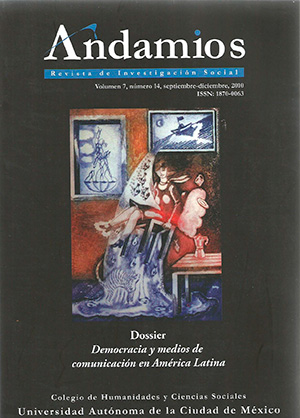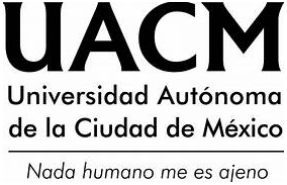MEMORY AND THE FREUDIAN PSYCHE WITHIN THE PLAY OF PHANTOLOGY
DOI:
https://doi.org/10.29092/uacm.v7i14.106Keywords:
Memory trace, deconstruction, hantology, event, inscriptionalityAbstract
Some theoretical and clinical consequences emerge after Freud establishes an analogy between the psychic apparatus and a writing machine. In theoretical terms, when the psychic apparatus’ mechanism is a process of inscription, the memory trace is alterable. If the trace can be modified, memory is a phenomenon immersed within what Derrida calls hantology or ontology haunted by “ghosts” coming from the past and from the future and no an archive of past “presents.” Memory in Freud is then attuned with the Derridian understanding of the event since it comes out as repetition in difference, that is, since each “new” trace keeps something from the prior text while at the same time emerges as inauguration. Clinically, it shows necessary to abandon the search of an ultimate and original sense in the patient’s discourse.
Downloads
References
CRAGNOLINI, M. (2002), “Una ontología asediada por fantasmas: el juego de la memoria y la espera en Derrida”, Escritos de filosofía, núm. 41-42, Buenos Aires: Academia Nacional de Ciencias, pp. 235- 241.
__________ (2007), “Derrida: deconstrucción y pensar en las fisuras”, en Mónica Cragnolini, Derrida, un pensador del resto, Buenos Aires: La Cebra.
__________ (2006), Introducción al pensamiento de Jacques Derrida. Curso virtual disponible en línea en: www.comunidadrussell.com/ cursosvirtuales/derrida, enero-junio 2006.
DERRIDA, J. (1989), “Freud y la escena de la escritura”, en Jacques Derrida, La escritura y la diferencia, trad. por P. Peñalver, Barcelona: Anthropos, pp. 271-317.
__________ (1995a), Khôra, trad. por D. Tatián, Córdoba: Alción Editora.
__________ (1995b), Espectros de Marx. El estado de la deuda, el trabajo del duelo y la nueva Internacional, trad. por J. M. Alarcón y C. de Peretti, Madrid: Trotta.
__________ (1997), Mal de archivo, trad. por P. Vidarte, Madrid: Trotta.
__________ (2003a), “Firma, acontecimiento, contexto”, en Jacques Derrida, Márgenes de la filosofía, trad. por C. González Marín, Madrid: Cátedra, pp. 347-372.
__________ (2003b), “La différance”, en Márgenes de la filosofía, trad. Por C. González Marín, Madrid: Cátedra, pp. 37-62.
FREUD, S. (1895), Proyecto de psicología, en Sigmund Freud, Obras completas, vol. 1, Buenos Aires: Amorrortu, pp. 323-446.
__________ (1896), “Carta 52”, en Sigmund Freud, Obras completas, vol. 1, Buenos Aires: Amorrortu, pp. 274-280.
__________ (1900), La interpretación de los sueños, en Sigmund Freud, Obras completas, vol. 5, Buenos Aires: Amorrortu, pp. 345-670.
__________ (1925), “Nota sobre la pizarra mágica”, en Sigmund Freud, Obras completas, vol. 19, Buenos Aires: Amorrortu, pp. 239-247.
__________ (1937), “Análisis terminable e interminable”, en Sigmund Freud, Obras completas, vol. 23, Buenos Aires: Amorrortu, pp. 211-254.
HANSS, L. A. (2001), Diccionario de términos alemanes de Freud, Buenos Aires: Lumen.
PLATÓN, (2002), Timeo, en Diálogos vol. VI: Filebo. Timeo. Critias, trad. por M. López, Madrid: Gredos.
Published
Issue
Section
License
This Journal is licensed under Creative Commons Mexico 2.5. It is allowed to reproduce and disseminate the contents of the Journal for educational or research purposes, not for profit, as long as they are not mutilated and cite the source (Andamios, Revista de Investigación Social) and the author.
The copyright of the articles published in Andamios, Revista de Investigación Social are transferred by the author(s) to Universidad Autónoma de la Ciudad de México when the originals have been accepted, so that they are published and distributed both in the printed and electronic versions of the Journal. However, as established by law, the author(s) retains their moral rights. The author(s) will receive a form of assignment of copyright that they must to sign when their original has been accepted. In the case of collective articles, the signature of one of the authors will suffice, provided that the latter has obtained the consent of the others.
Authors may use the material of their article in other works or books published by themselves, with the condition of quoting Andamios as the original source of the texts.
The articles contained in this publication are the responsibility of their authors and do not compromise the official position of Andamios, Revista de Investigación Social of the Universidad Autónoma de la Ciudad de México.


